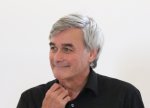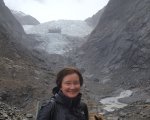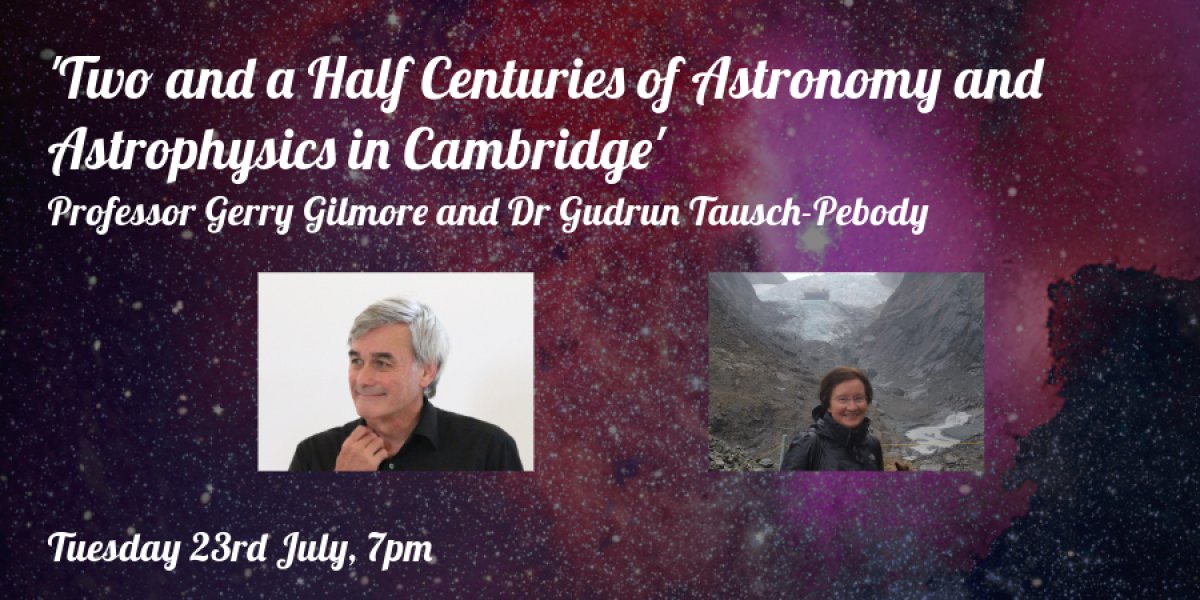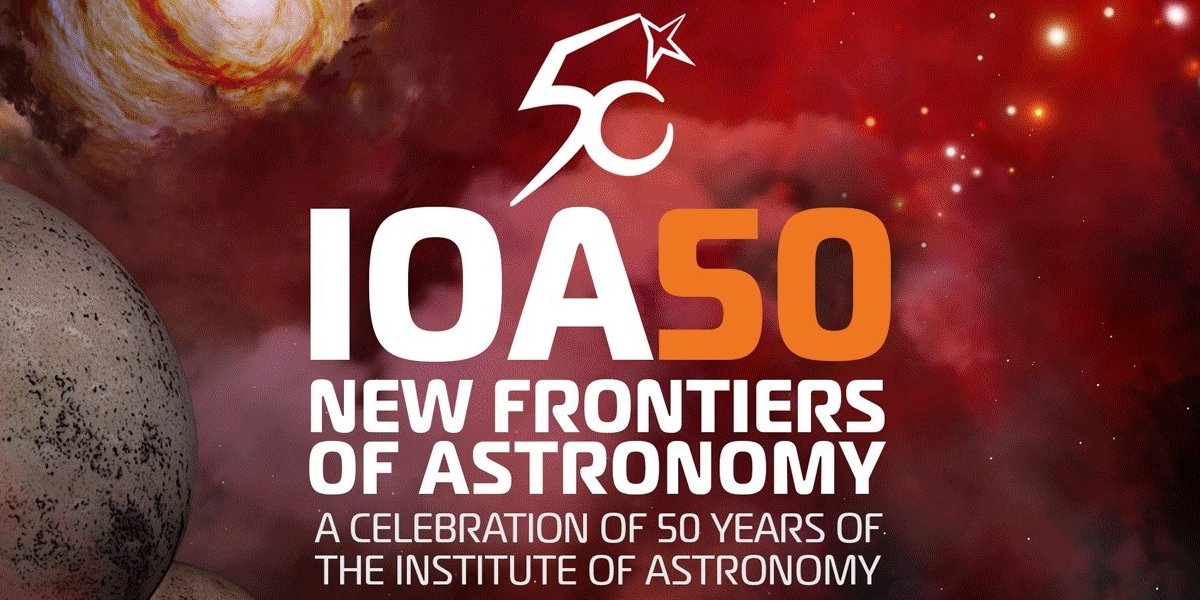Two and a Half Centuries of Astronomy and Astrophysics in Cambridge
Two and a Half Centuries of Astronomy and Astrophysics in Cambridge
Tickets for this event are now sold out. Please visit the Institute of Astronomy YouTube Channel to join online.
Join Professor Gerry Gilmore and Dr Gudrun Tausch-Pebody for a look back at the fascinating history of Astronomy and Astrophysics in Cambridge.
'The University Observatory in Cambridge opened in 1823, after 50 years effort. Key figures in establishing the Observatory, the first non-College Cambridge department, included young mathematical astronomers – George Peacock, John Herschel, and Charles Babbage. Over the next century the focus was optical positional astronomy, generating star catalogues. Controversy included the discovery of Neptune (not in Cambridge) while unsung stories include the 20-year career of the second (after Caroline Herschel) woman employed as a night-time astronomy observer - one among many locally unrecognized women who worked in Cambridge astronomy and later earned international recognition in their fields. We will tell some of their stories.
In the 20th century a long impressively complex and somewhat underhand campaign led to “astrophysics” in Cambridge. The 1909 Chair of Astrophysics was established. 1913 bought a major reorganization, the Astrophysics Chair being endowed and meteorology formalized. The Solar Physics Observatory was transferred from London, establishing “astrophysics” in Cambridge. Meteorological science saw the appointment of C.T.R. Wilson as Observer in Meteorological Physics. Arthur Eddington succeeded George Darwin as Plumian Professor, in principle employed in dynamical astronomy with little support, in fact delivering astrophysics and the 1919 eclipse. By 1946 key positions were vacant, the two Observatories combined into one by the University, the Plumian Chair moved to DAMTP. In 1958 Fred Hoyle became Plumian, establishing, in 1967, IOTA, the Institute of Theoretical Astronomy. In 1972 the merger of the (combined) University Observatories with IOTA created the Institute of Astronomy.
Through this history there are many interesting personalities, some devious stories, many impressive scientific advances. We will introduce a few to give a flavor of these.'
Speakers
Professor Gerry Gilmore (Institute of Astronomy, University of Cambridge)

Professor Gerard Gilmore is Professor of Experimental Philosophy, in the Institute of Astronomy, at the University of Cambridge. His research has centred on studying stars in the Galaxy to understand its structure and evolutionary history. Watch Prof Gilmore's 'Larmor Lecture'.
Dr Gudrun Tausch-Pebody (Institute of Astronomy, University of Cambridge)

Gudrun joined the Institute of Astronomy in 2012, managing a succession of large international consortia-led projects centring on research infrastructures, instrumentation, trans-national access, and developing strategic advice to the EC to support EC planning. She advises members of the IoA and of the international community on EC funding strategies, proposal writing and contractual matters, and collaborates with astronomers on the history and philosophy of science, e.g. The 1919 eclipse results that verified general relativity and their later detractors: a story re-told | Notes and Records: the Royal Society Journal of the History of Science (royalsocietypublishing.org)
Booking information
Booking for this event is now closed.

